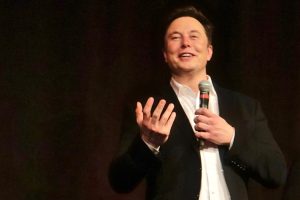Tesla CEO Elon Musk now announced an upcoming FSD Beta capability to make the driver-assist system operate even more humanlike.
Tesla’s Full Self-Driving Beta is designed to be an eventual replacement for a competent human driver. And while the current iteration of the advanced driver-assist system still has a lot of room for improvement, there is little doubt that FSD Beta 10 is far more confident and runs smoother than its previous iterations.
In a recent post on Twitter, Elon Musk stated that FSD Beta 10.1 would be able to creep forward with more confidence and quickly reverse back a little if needed. The CEO added that FSD Beta 10.1 would initiate the quick reverse maneuver if the vehicle senses danger.
While it may be a minor update, FSD Beta 10.1’s capability to reverse could improve its performance in intersections. It could also improve the maneuvers of vehicles during unprotected left turns. As noted by Musk, the reversing maneuver is modeled after how human drivers typically behave when faced with similar situations.
Tesla would have to exercise extreme caution when implementing FSD Beta 10.1’s reversing capability. Any sudden reverse maneuvers would likely incite strong reactions from other vehicles on the road, especially from cars directly following a Tesla. However, given Tesla’s focus on safety, FSD Beta 10.1 would likely calculate the distance between itself and the vehicle behind it and move only within a safe space.
Tesla FSD Beta 10 was released recently. And true to CEO Elon Musk’s predictions on Twitter, the new iteration of the advanced driver-assist suite is a significant step up from its previous iterations. The update’s improvements were demonstrated clearly in how FSD Beta 10 seamlessly completed a drive down San Fransisco’s Lombard Street–one of the most crooked streets in the United States. Unlike previous FSD Beta versions challenged by the twisty road, FSD Beta 10 navigated the street like a human driver, completing the drive smoothly and without disengagements.





